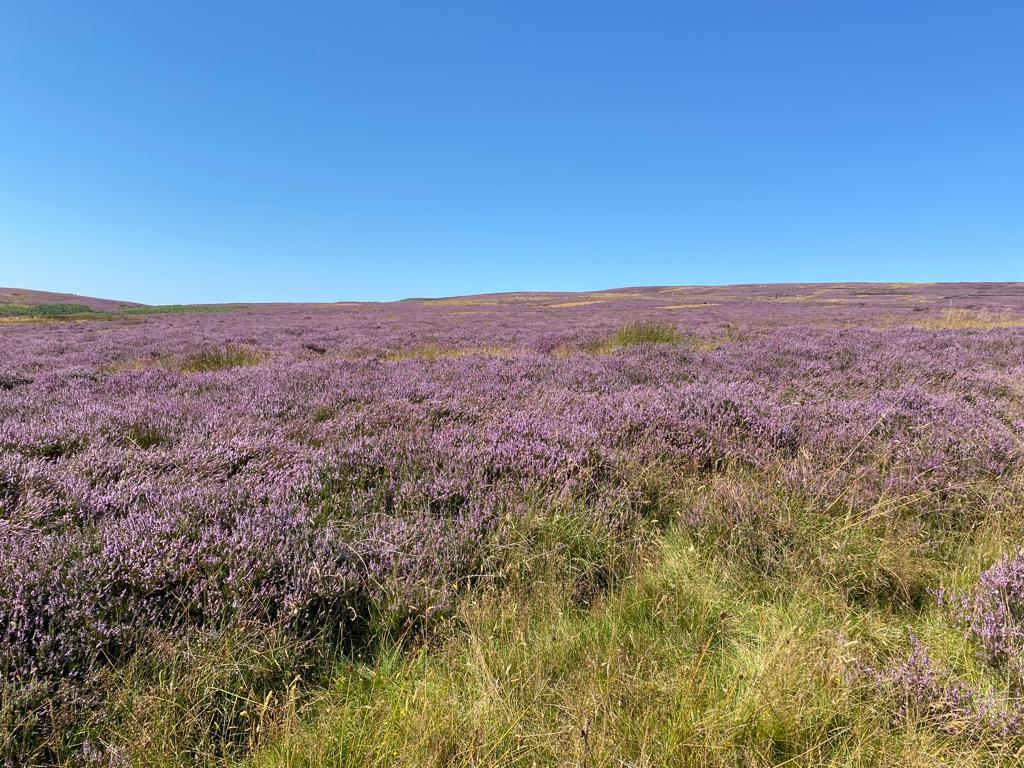Creating Peat Compost
Vegetation management on moorland has occurred for generations; there are three principal reasons for this:
- Cutting and burning rejuvenates the plant species promoting young, succulent growth which benefits the species and livestock that feed on it.
- Reducing the amount of fuel load on the moor means that any wildfire will be lower in severity and much easier to bring under control and extinguish
- Many upland breeding bird species favour a shorter vegetation cover
In the latter half of the 20th century, much of England’s uplands were designated SSSI (Site of Special Scientific Interest) status because of the landscape and species they held. With sucH designations comes significant regulation that we must conform with. This regulation is governed by Natural England and Raby work closely with them on a regular and continued basis to ensure a continual drive towards favourable status across the upland Estate. Raby also holds a number of environmental stewardship agreements that incorporate management prescriptions that aim to ensure a high standard of management, catering for the needs of the complex plethora of upland stakeholders and crucially nature and the landscape itself.
Heather burning was once a widespread practice, in recent years rotational burning on areas of blanket bog (moorland where the underlying peat is over 40cm deep) is no longer allowed, although there is a licensing process available in certain circumstances. Restoration burning on dry heath is still permitted and practised. This is done by a skilled team of experienced staff. A cool, quick burn method is used to ensure that it is only ever the heather foliage that is burnt, the underlying peat is never burnt or disturbed. To manage areas of heather dominated blanket bog in the absence of burning the Estate, with consent from Natural England utilise a method of restoration cutting. The heather is cut with a tractor and flail. Once cut the heather then starts to regrow from the rootstock but in the interim other dwarf shrub species and sphagnum mosses start to get a foothold creating a mosaic of plant species. The brash created is usually spread evenly over the cut site, typically a small area of say (50m x 10m).
When the hydrological condition of the blanket bog is right, then this brash soon begins to degrade and then adds to the peat layer. Raby is seeking to utilise some of the cut heather and this year with SSSI consent we have and will be harvesting approximately 4,000 bags (cu meter) of heather brash from key locations (donor sites) and using this to revegetate the areas of peatland restoration which we are undertaking in partnership with the Peat Partnership and others. These donor sites have been carefully selected to provide the right amount of heather and other dwarf shrub brash and seed stock. Some sites with a healthy presence of sphagnum moss will also be harvested with the intention that the Sphagnum will readily establish on the restoration site too.
Establishing sphagnum is a labour-intensive process so hopefully, this method will work. Bracken has for years been a problem in the upper dale, historically farmers would harvest it and use it for livestock winter bedding and then a farmyard fertiliser for the land. This practice is now rare but the encroaching nature of bracken remains a serious problem. One method is to use a chemical spray applied by helicopter to kill the plant however this year Raby has sought to try a new method that avoids chemicals and creates a useful raw material for a peat-free compost product. Of course, the locations in which bracken typically grows (steep, inaccessible, stoney ground) means that chemical control will still need to have its place but for the more accessible locations, we have worked with a Cumbrian company who have harvested the bracken using a typical agricultural process of cutting the bracken and round baling it.
These bales are then transported to their facilities and turned into compost in a matter of weeks. Heather and Bracken are both currently an underused resource, continued management of Raby’s moorland and utilising both plants in the above ways will improve the existing moorland but also reduce the burden on other resources which all factor into the UK’s goal for net-zero, providing a rich environment for wildlife and upland stakeholders.


